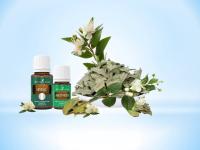June 30, 2022
Numerous studies have shown that essential oils from aromatic and medicinal plants exhibit different biological and pharmacological properties, e.g., antibacterial, antifungal, antiviral, anti-inflammatory, immunomodulatory, antioxidant, and wound healing effects, such as in sunburns, chemical burns, radiation burns, and eczema. In folk medicine, plant extracts and essential oils play an important role as therapeutic substitutes in the prevention and treatment of cardiovascular diseases due to their antiatherogenic, hypocholesterolemic, hypotensive, and anti-inflammatory properties. The advantage of EOs in pharmacological applications is their fat solubility, low molecular weight, and small size. Moreover, isolated essential oils compounds are able to pass through the skin, mucosa, and cell membranes and thus enter the systemic body circulation.
Since a number of medications are associated with weight gain including antidepressants, beta-blockers, antidiabetics, migraine meds, and oral corticosteroids, a recent preclinical study evaluated the oral administration of bay laurel (Laurus nobilis) CT 1,8-cineole or myrtle CT 1,8-cineole (0.5 mL mixed in equal parts sunflower oil, for two weeks) for their benefits on body weight control, antioxidant status, and lipid control. Both oils promoted weight loss, reduced blood glucose levels, and decreased lipid levels (total cholesterol, LDL, VLDL) and atherogenic indicators, leading to cardiovascular protection. Overall, bay laurel was more effective and considered an excellent candidate to combat obesity caused by medications due to its ability to inhibit enzymes responsible for conversion of carbohydrates into glucose and effects on lipid metabolism in the liver. This activity suggests that ingestion of bay laurel essential oil may result in weight loss. Myrtle exhibited better antioxidant capacity in most tissues, but also promoted undesirable effects.

